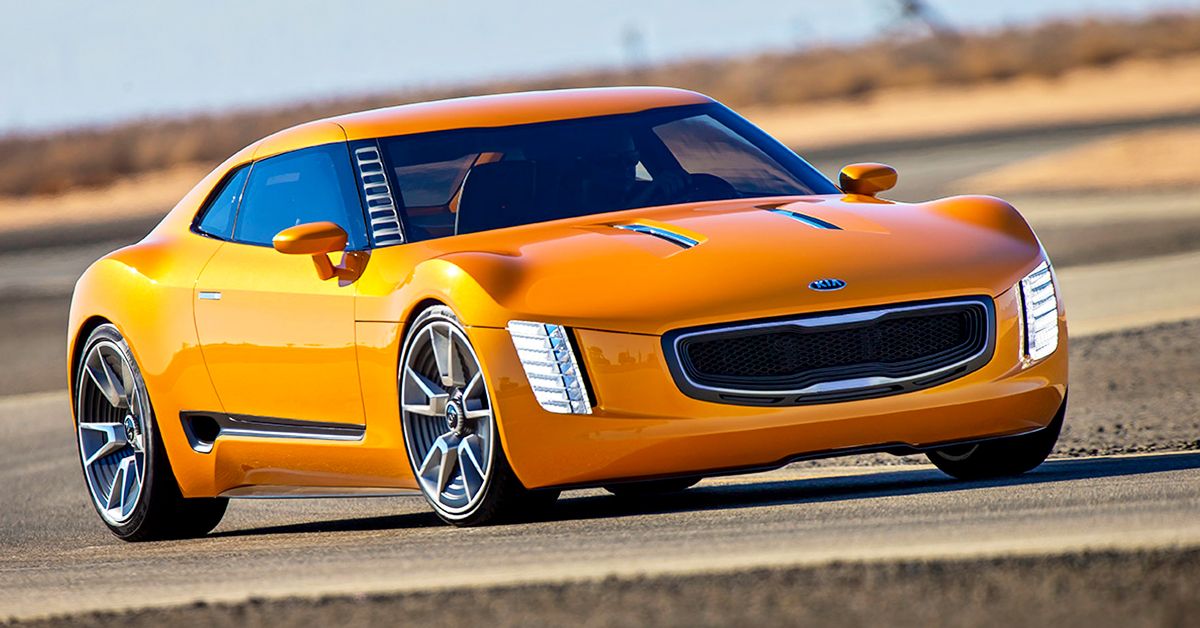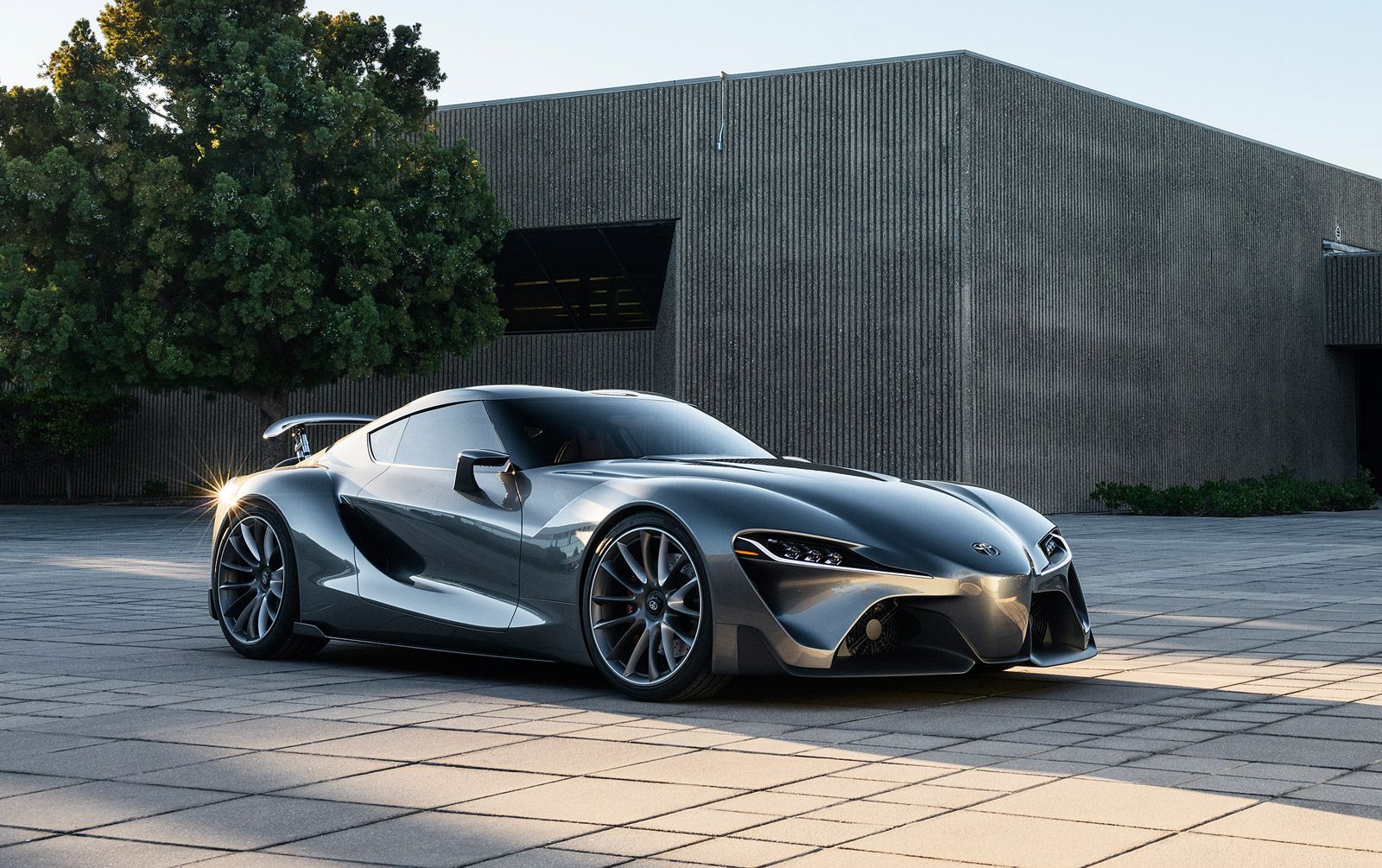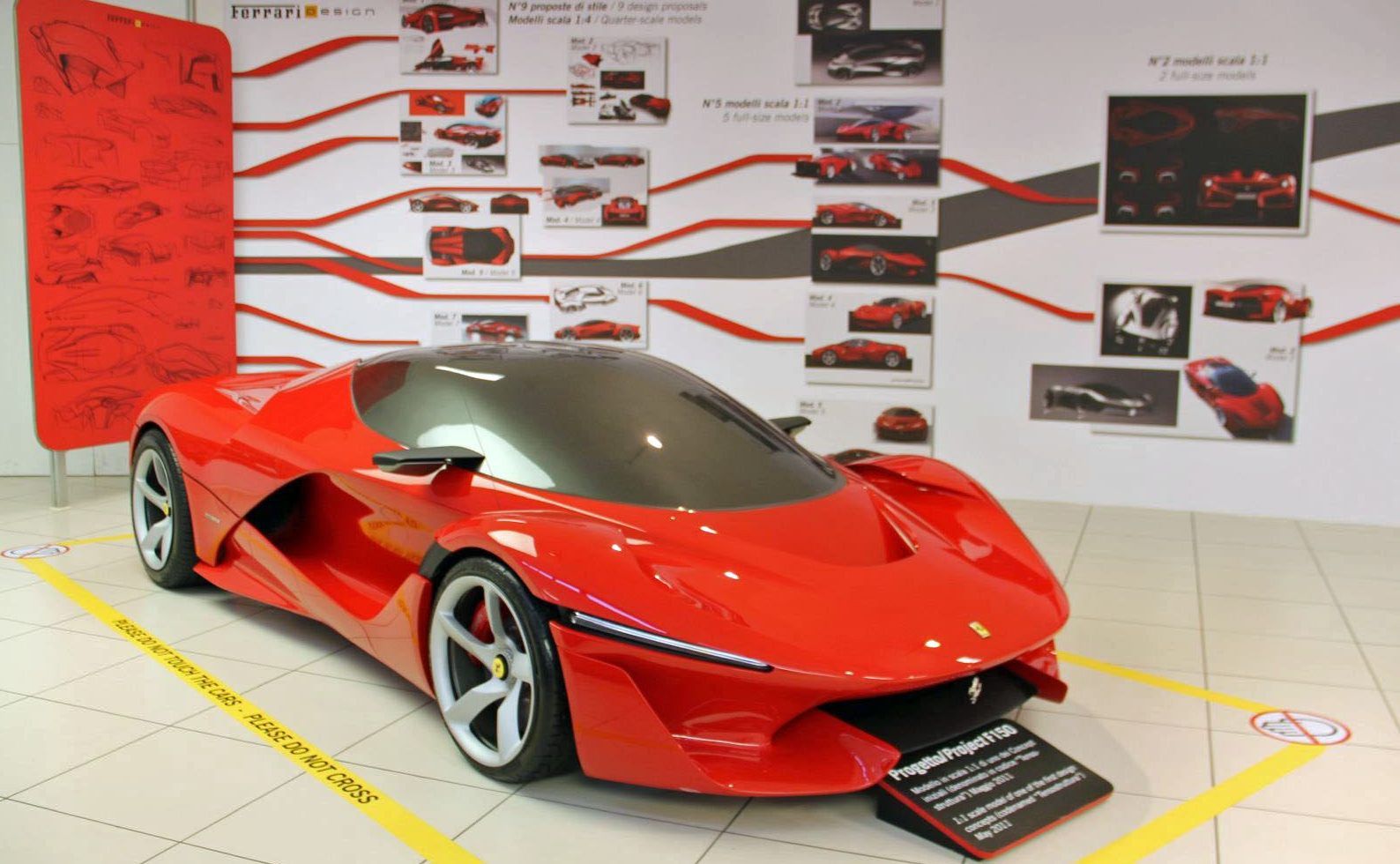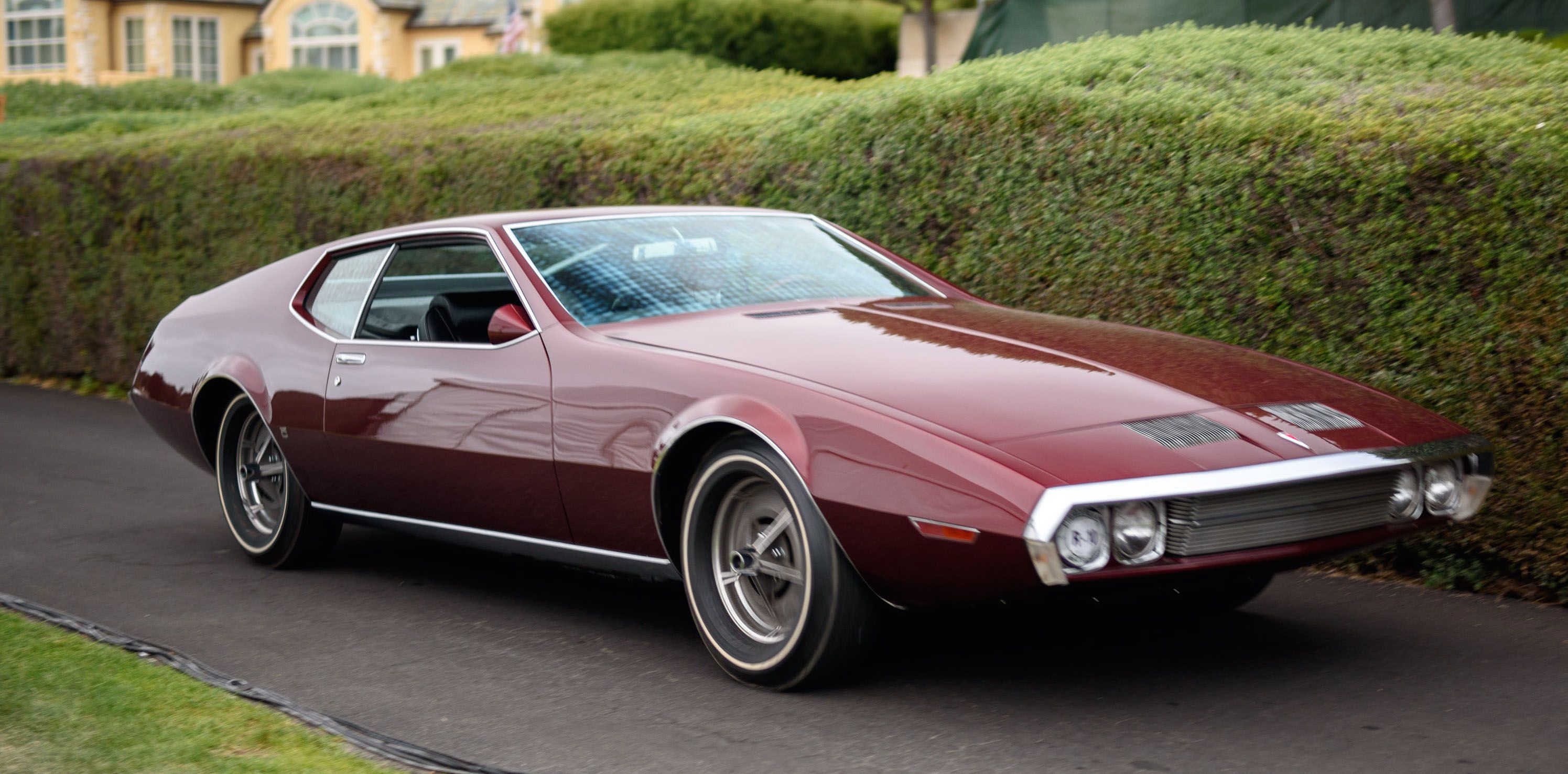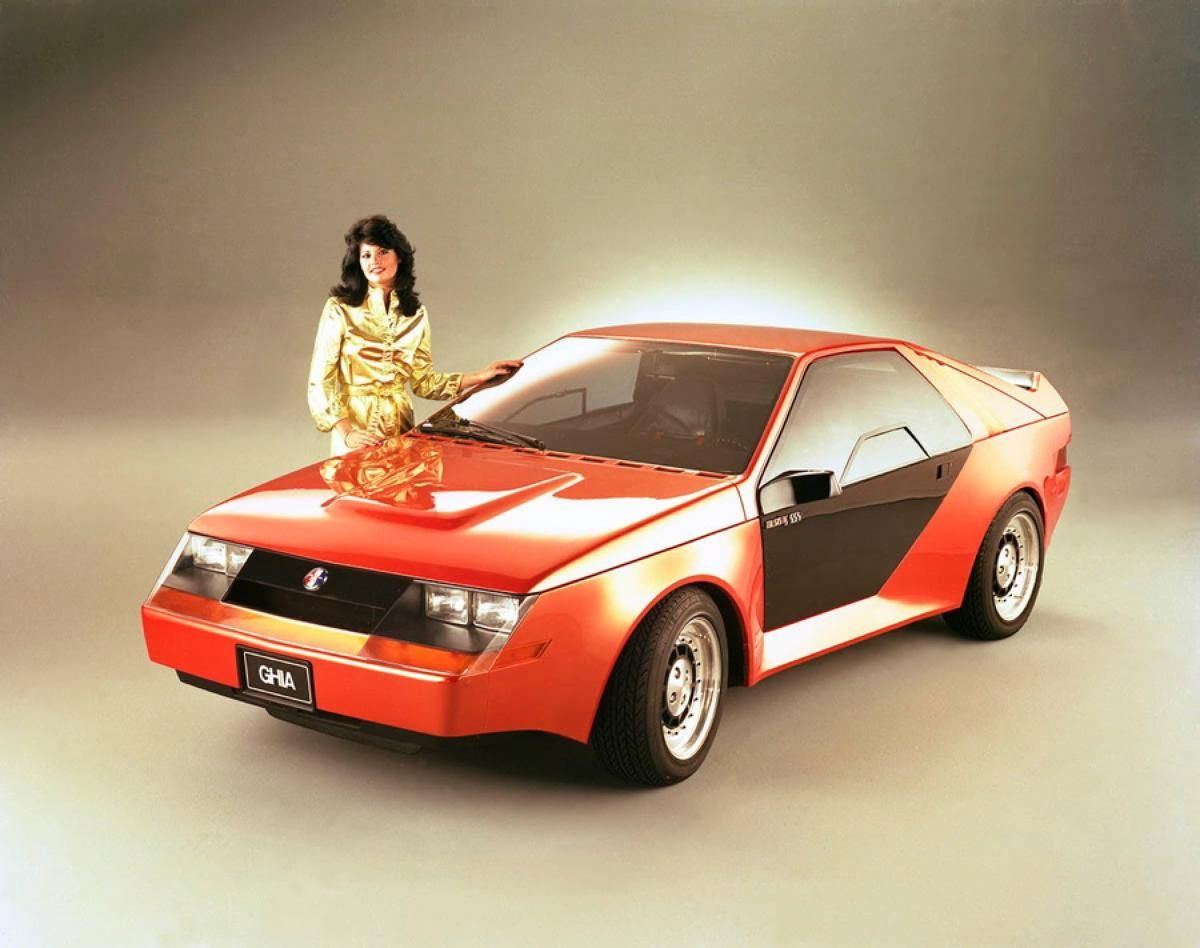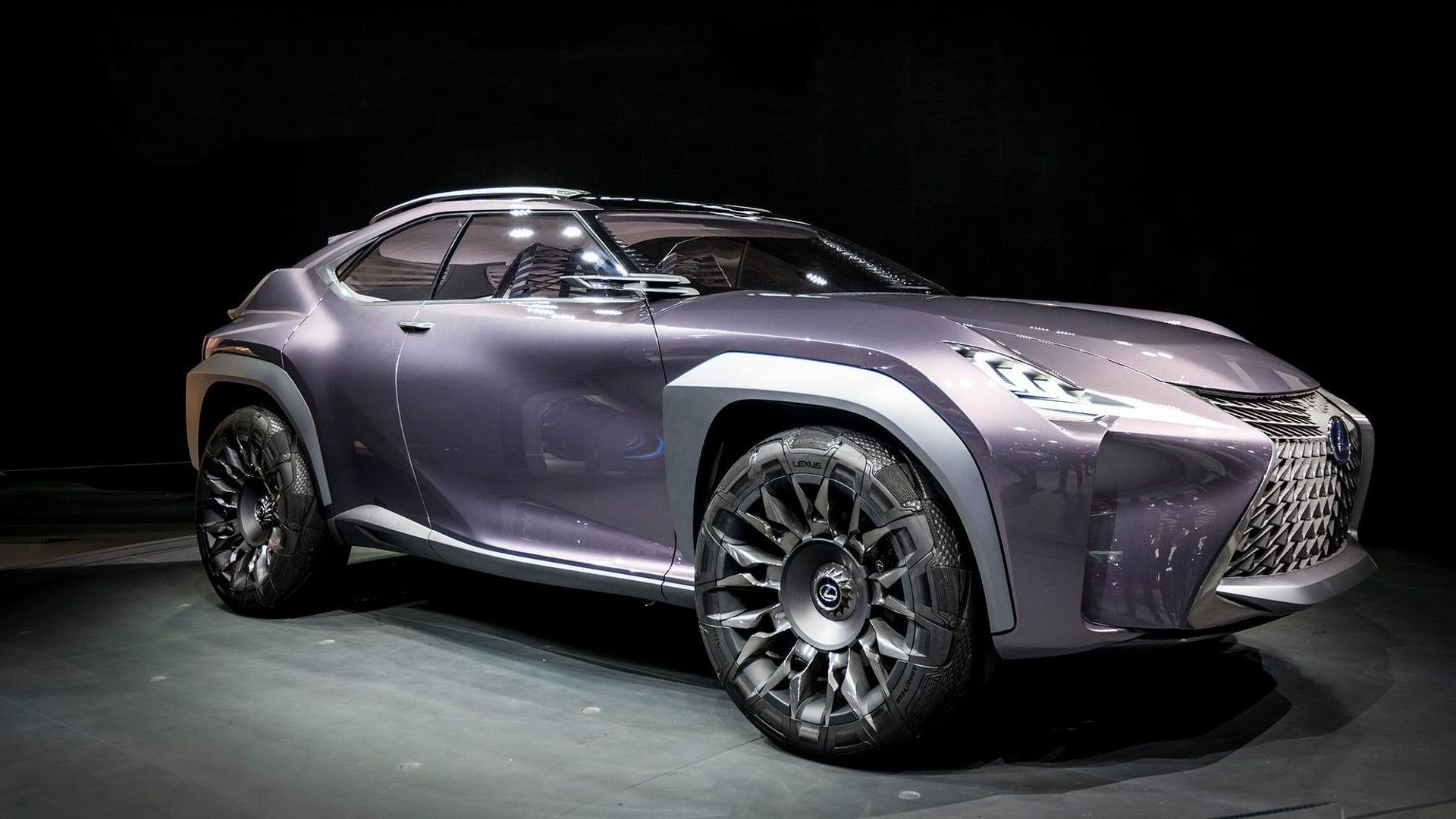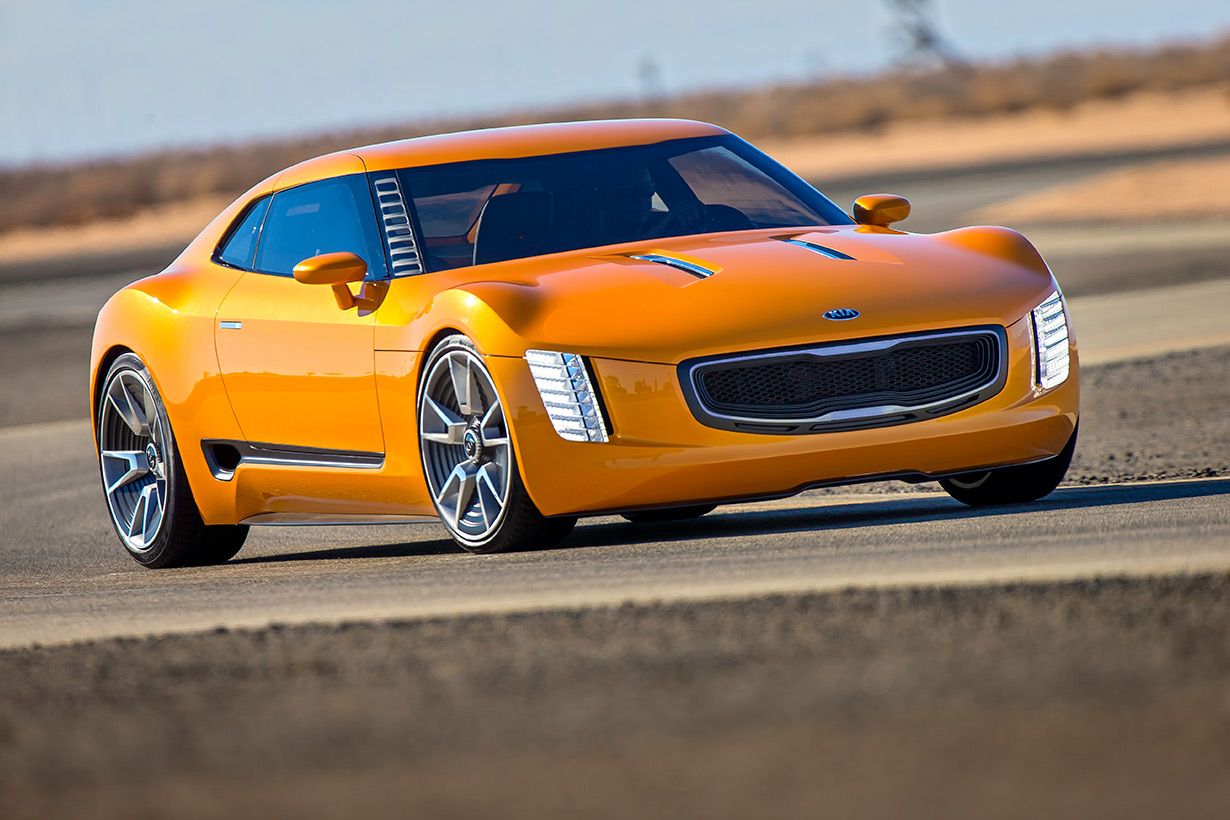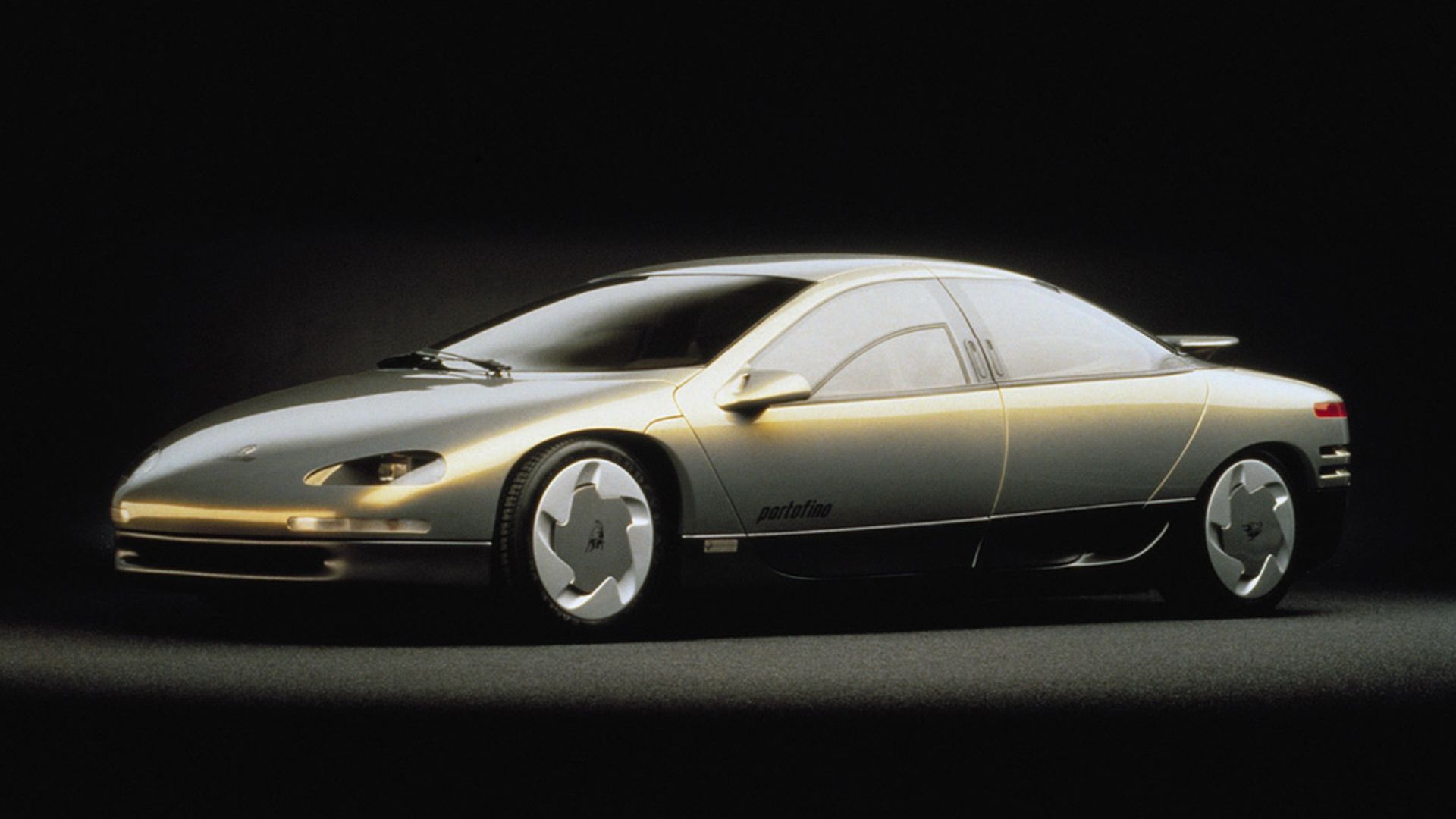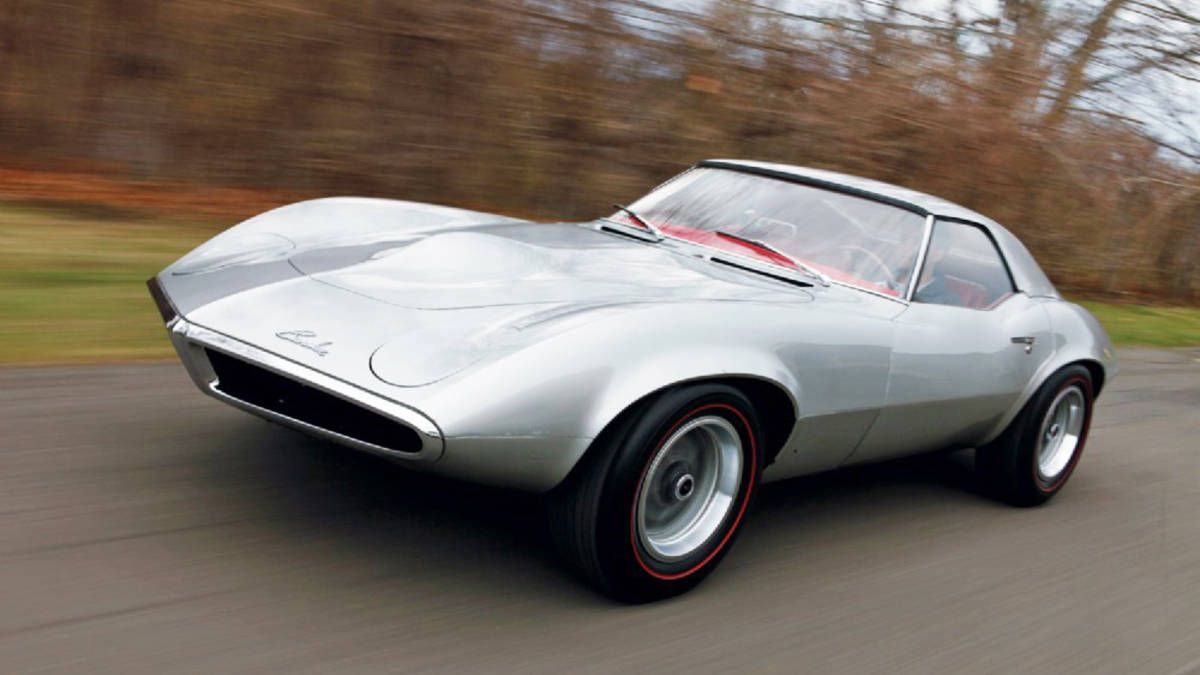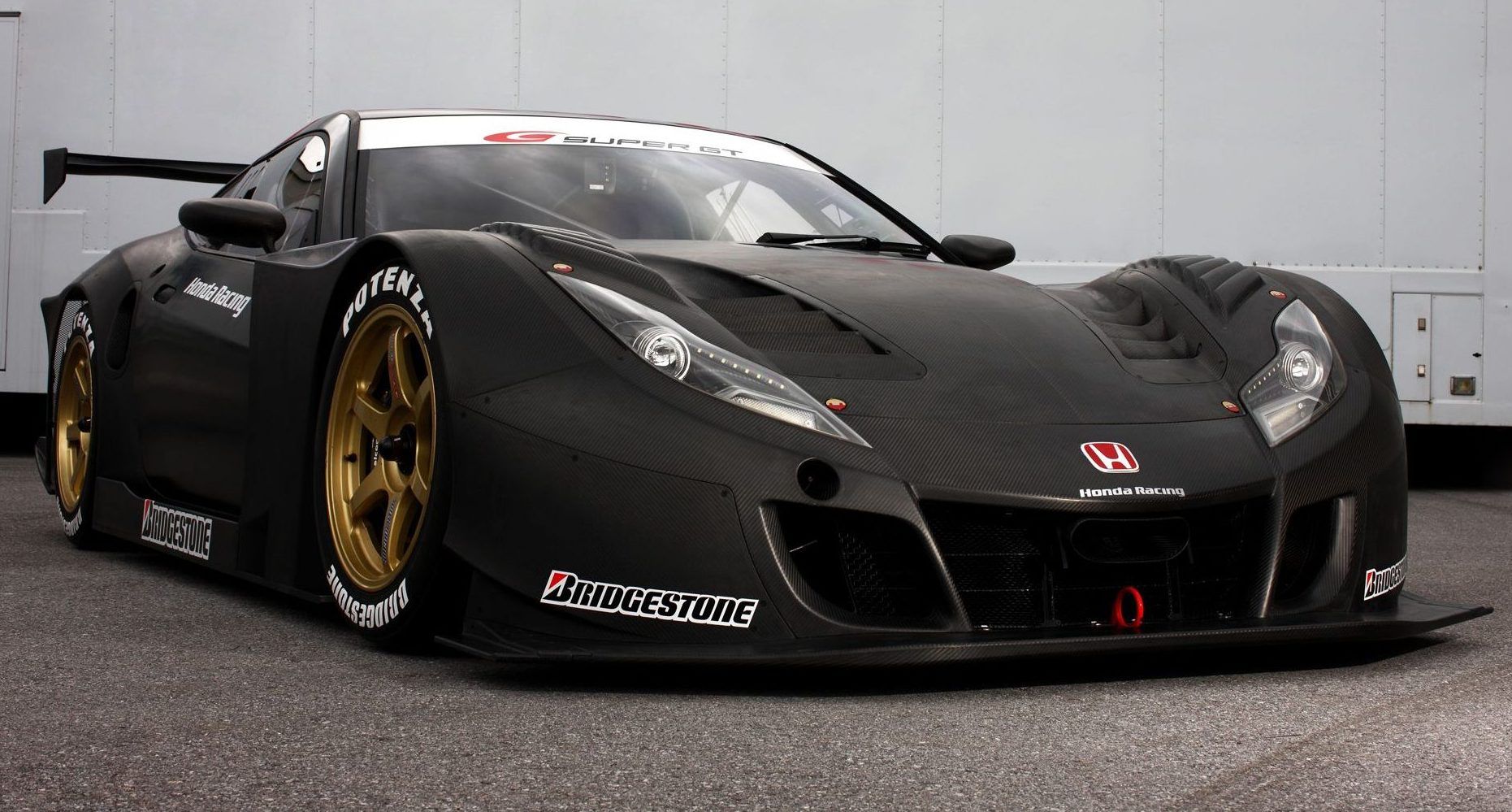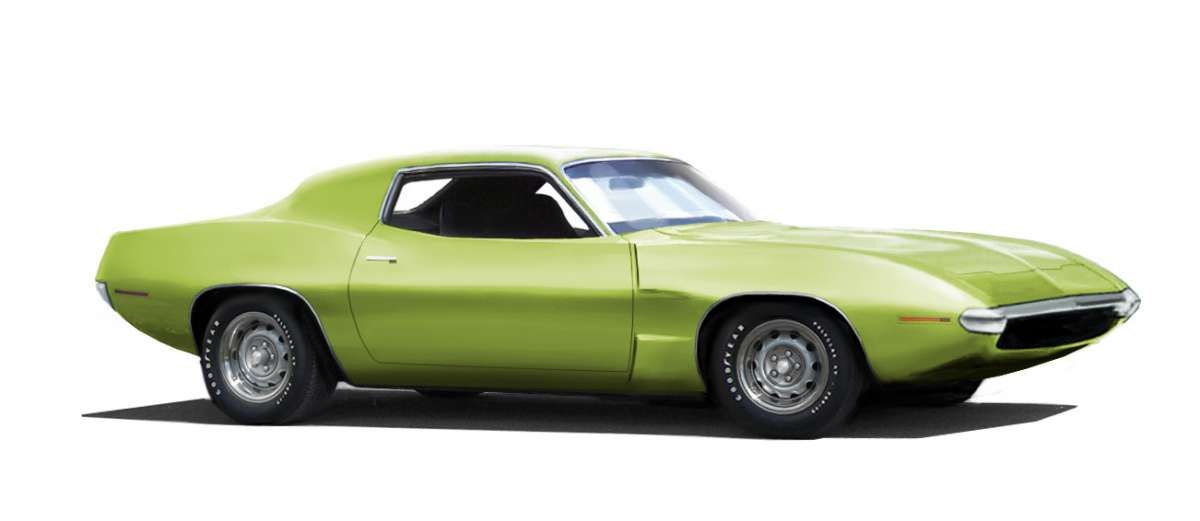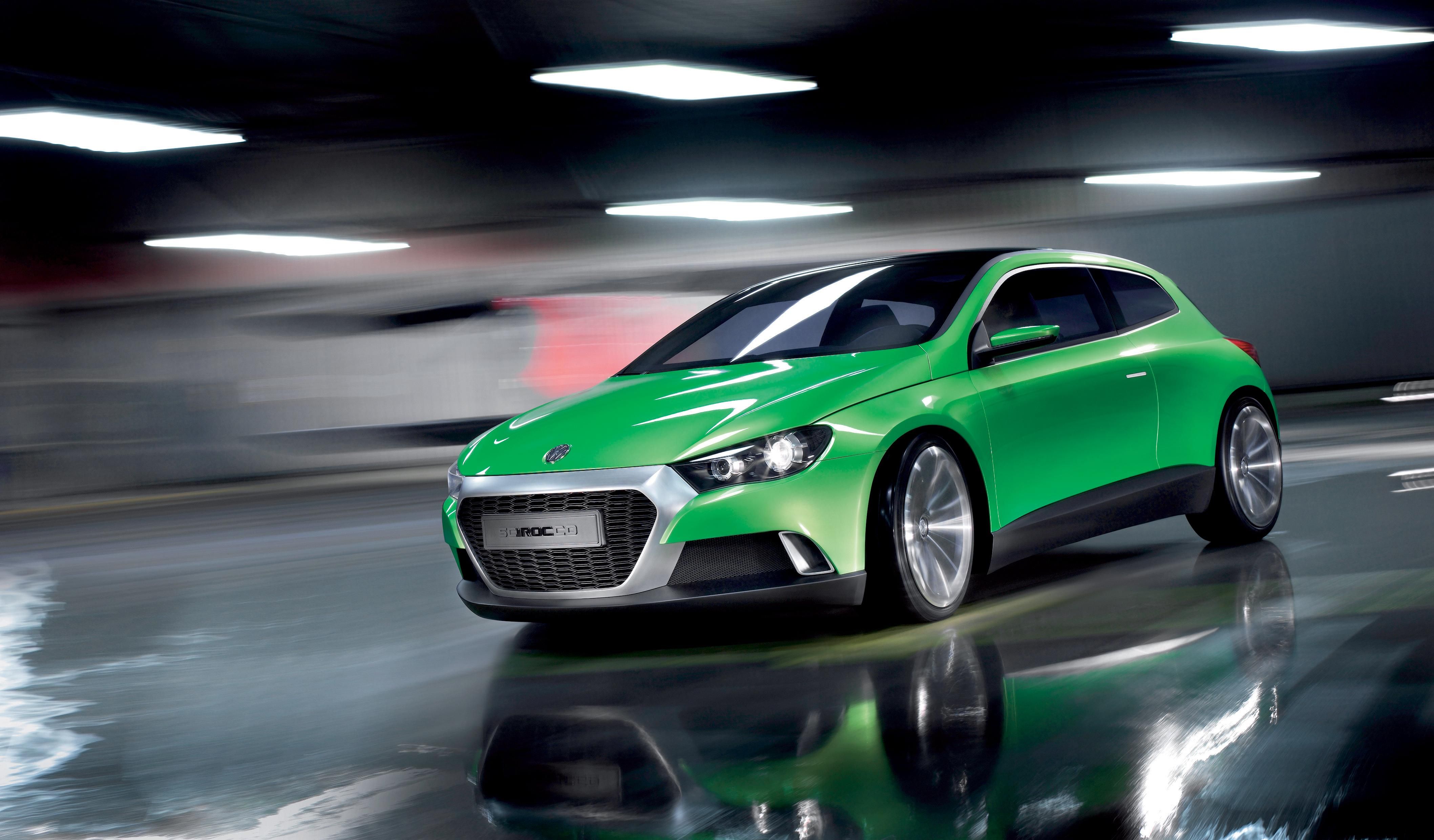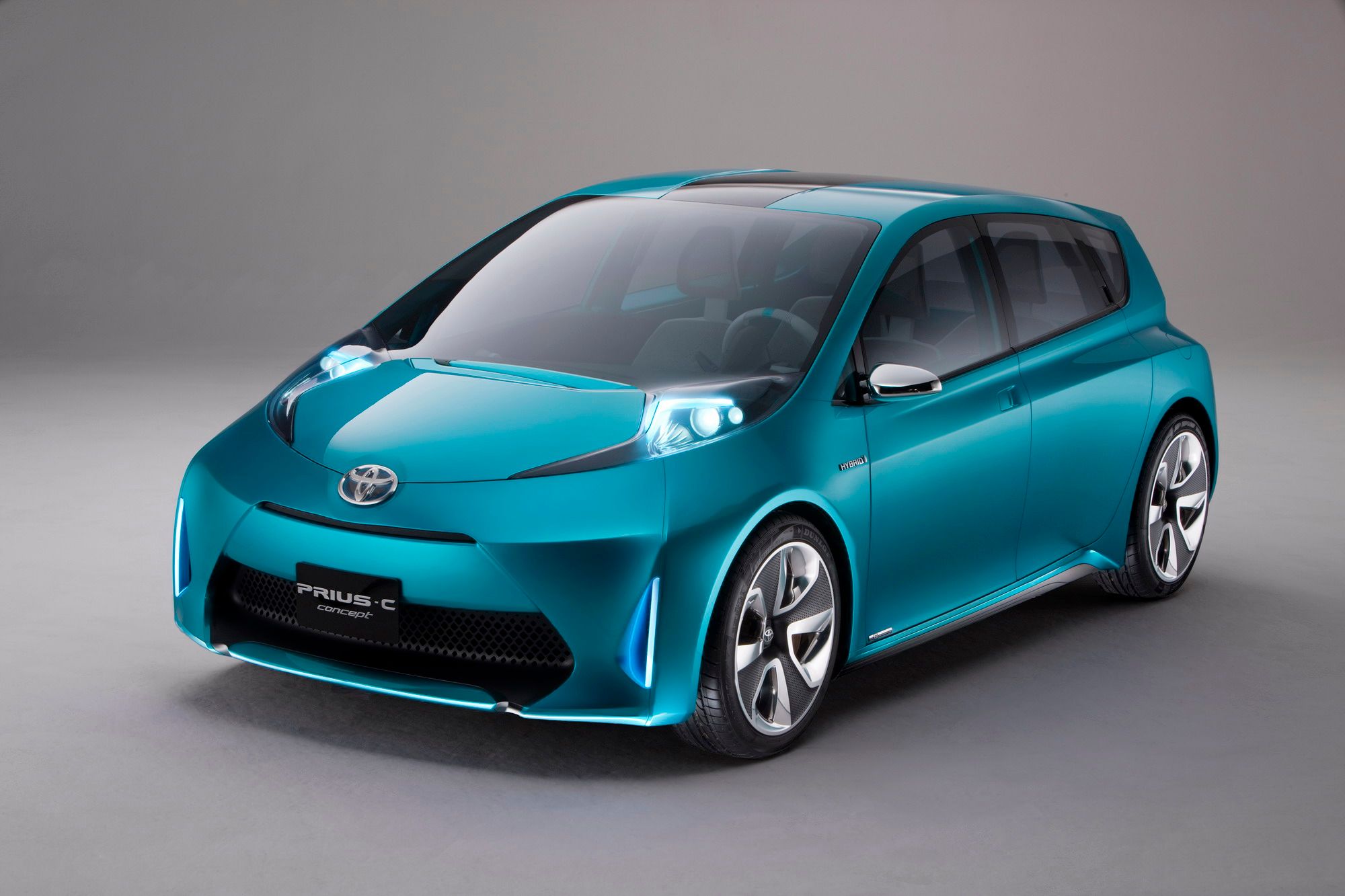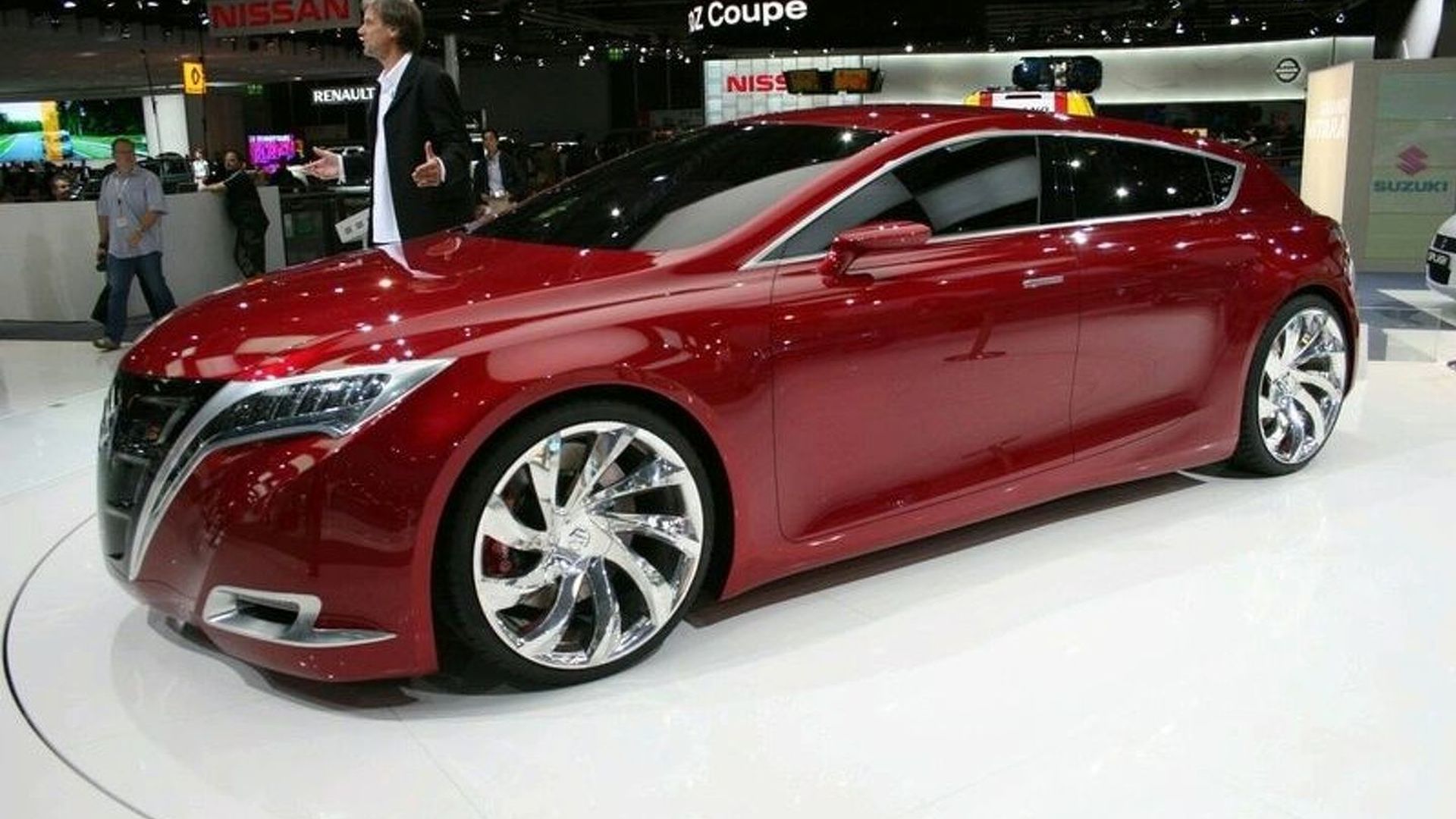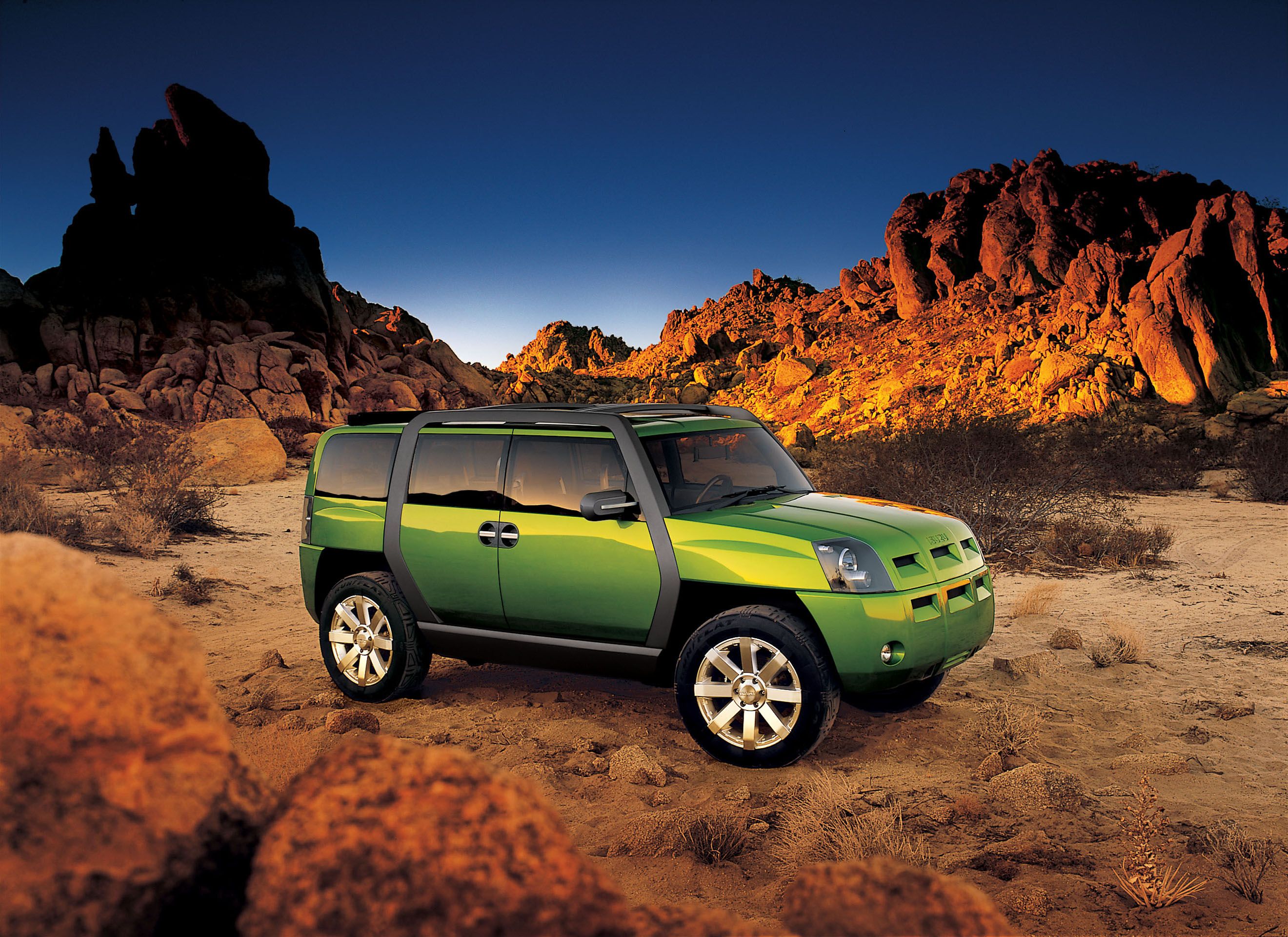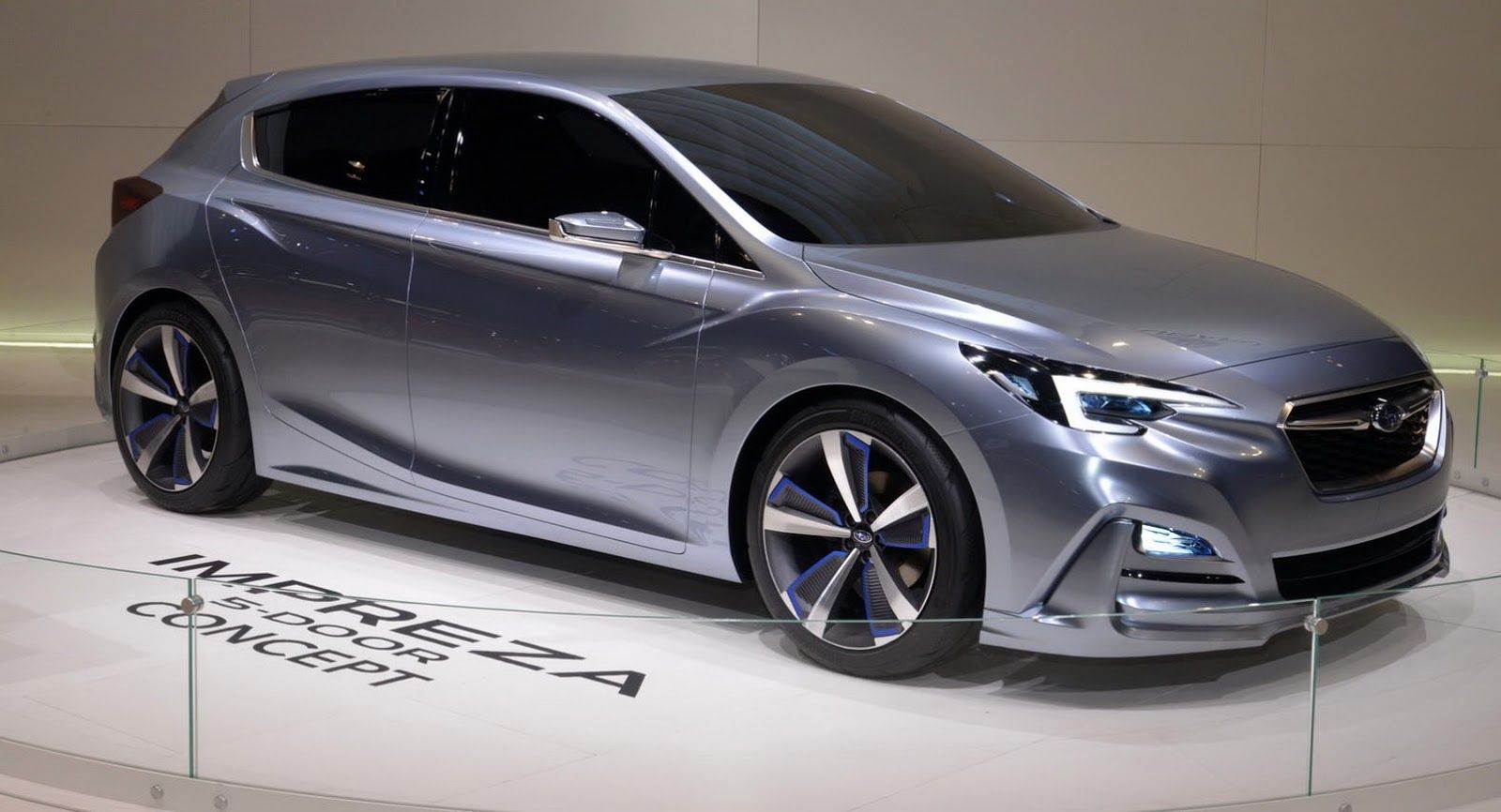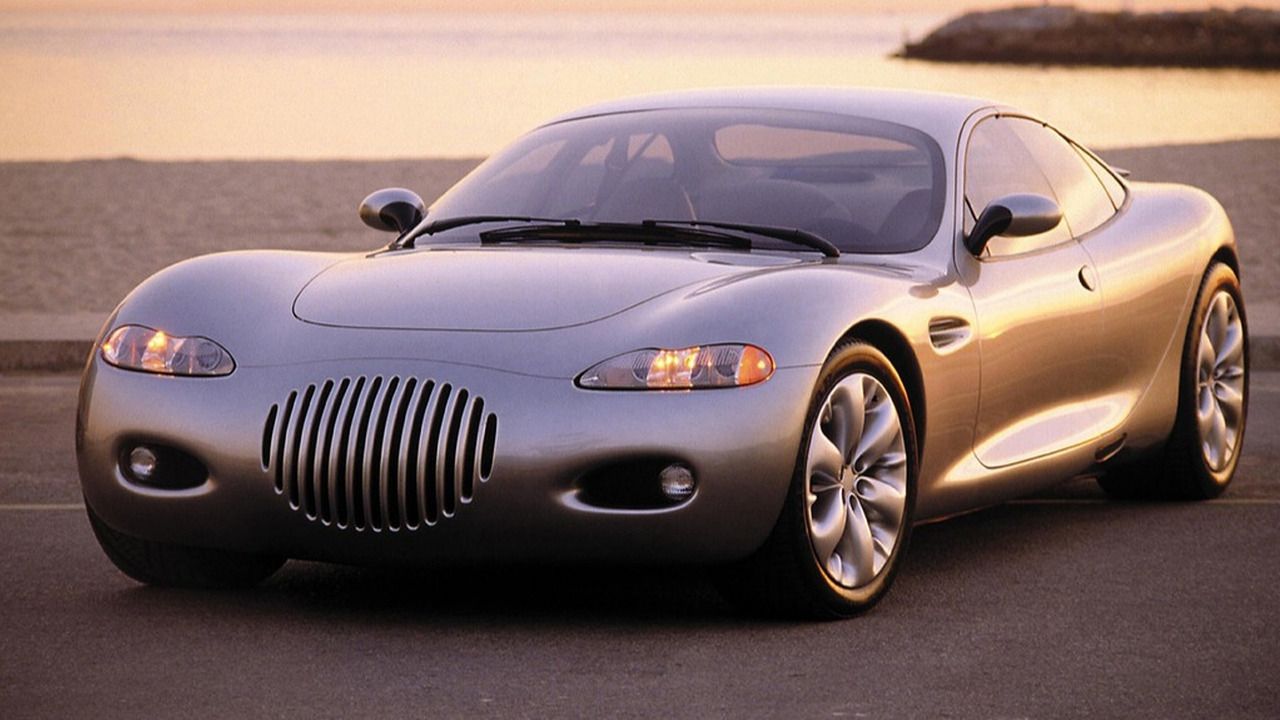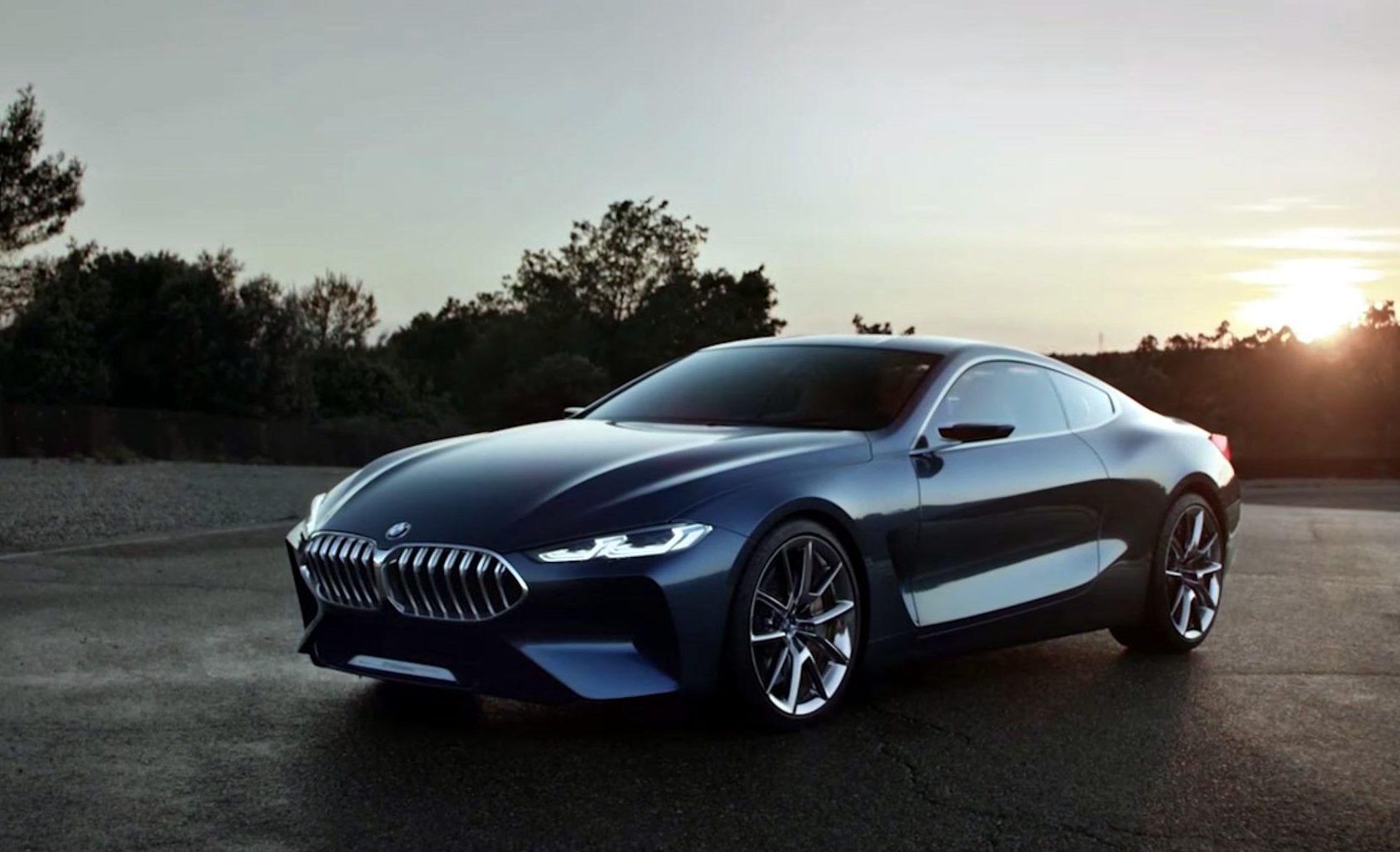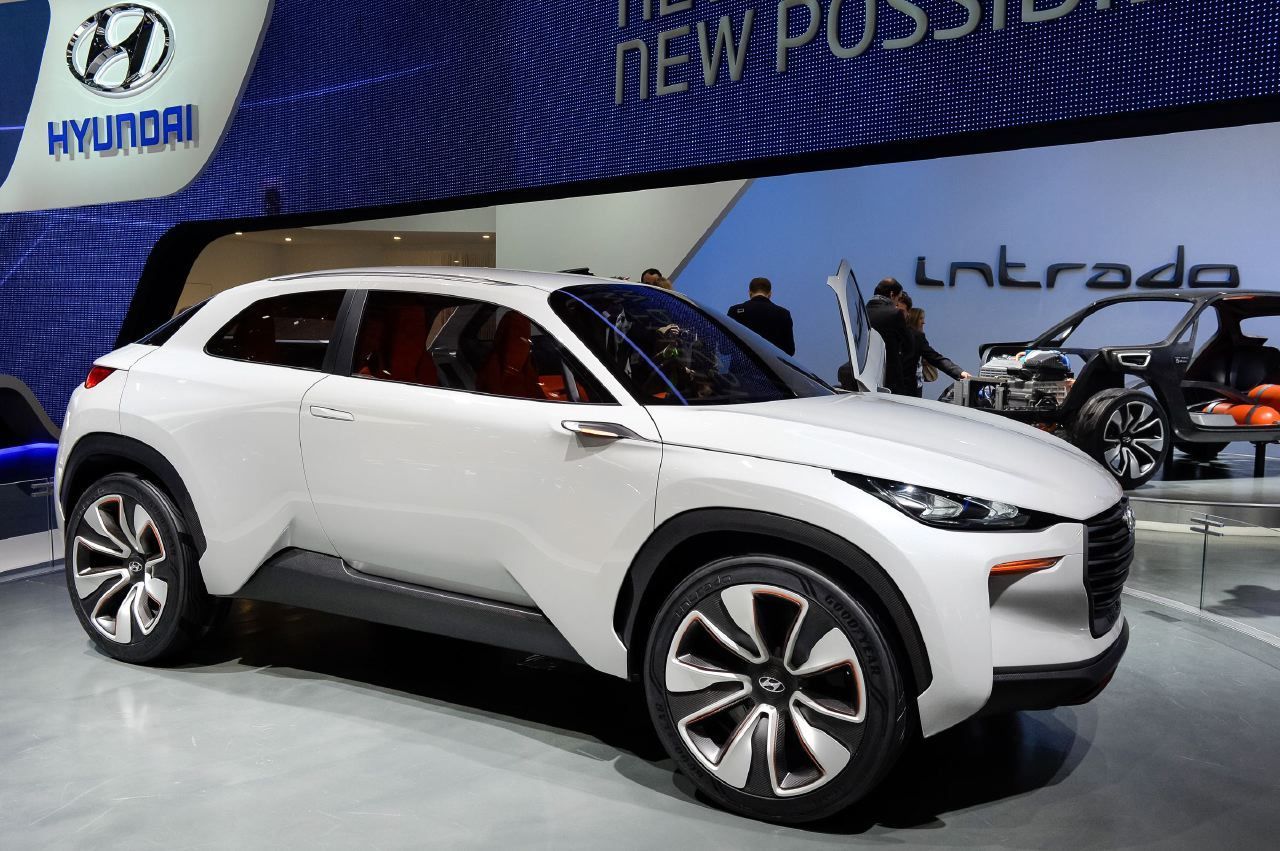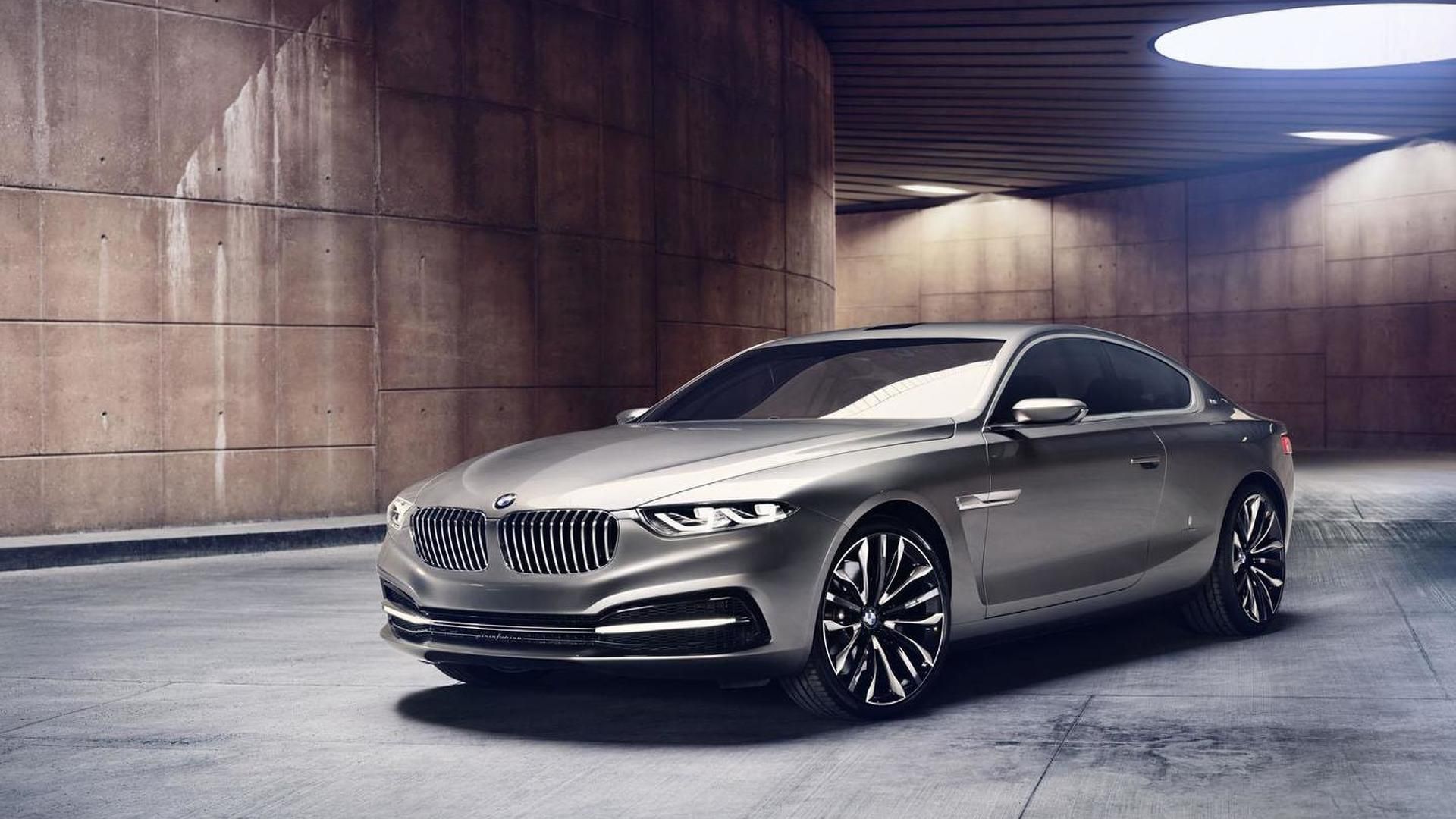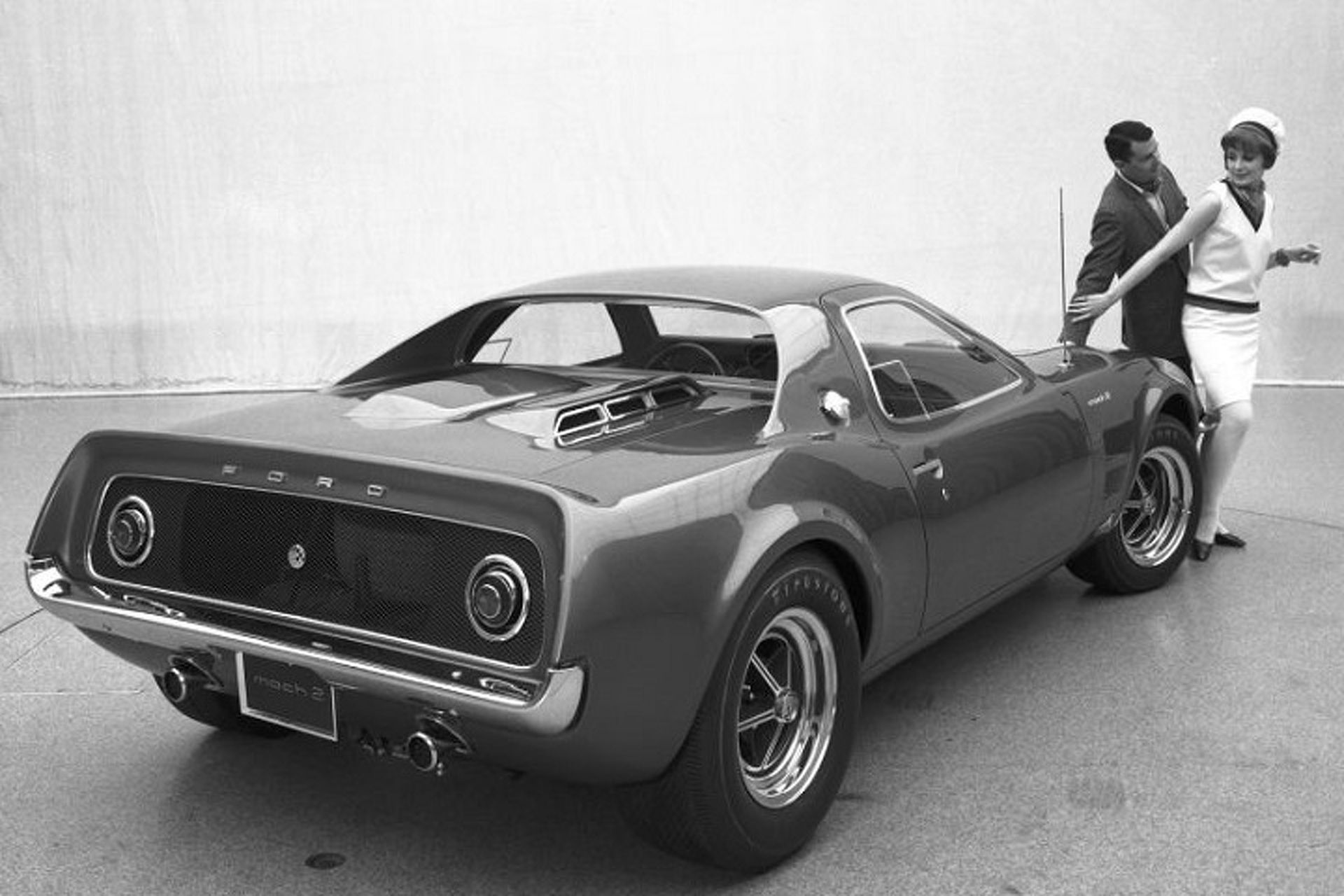In the same way that movies can exaggerate real life in the name of entertainment, the concept car might be seen as a dramatization of a future production vehicle as a way for manufacturers to draw interest. Designers and stylists know that 20-inch wheels, low-profile tires, and zero fender gap could never be approved for a production mid-priced sedan, yet the typical concept model wouldn’t be caught without “dubs” wearing rubber bands and muffler-scraping ride height.
Similarly, deep and sharp creases in door sides or hoods are easy enough to render in clay but would be a nightmare to stamp in sheet metal with a tool meant to reproduce hundreds of thousands of units without defect. At the same time, many aesthetic elements of some concepts, or even the entire concepts themselves, are very achievable in production, and yet they never make it to real life due to economic pressures, corporate political factors, or negative consumer feedback.
For every Pontiac Aztec mistake that makes it to market, there are several potential superstars that never move past the concept stage. For how many years and how many iterations will the mid-engined Corvette have been through before it will finally reach production? Right or wrong, there are forces at work that go beyond the desires of the designers, car enthusiasts, or even the CEOs that can mean the success or failure of even the best ideas. The following are 20 examples of remarkable designs executed poorly in production, or even not at all, and the stories behind them.
20 Toyota FT-1
The fourth-generation Toyota Supra (1993 to 2002) made an indelible mark on car culture, making the task of replacing it that much more difficult. Toyota teased the public with the Supra’s successor, first when they revealed the FT-HS in 2007, then with the FT-1 that was revealed in 2014. With the unveiling of the GR Supra Racing concept and numerous spy shots of camouflaged prototypes, it became obvious that the FT-1 previewed the look of the soon-to-be-released Supra. Launched in 2019, the production Supra indeed followed the aesthetic of the FT-1, albeit with notable revisions common when a dramatic concept is engineered for mass-production. Significantly reduced sculpting, larger radius creases, and the prominent nosecone being virtually eliminated are the unfortunate result of manufacturing and budget constraints.
19 Ferrari LaFerrari
The lineage of the modern Ferrari supercar could be said to start with the 1987 F40, which was succeeded roughly once a decade by the F50 (1995), Enzo (2002), and finally, the LaFerrari (2013). The LaFerrari is unique in this group, having not been styled in collaboration with Pininfarina, and it was designed entirely in-house at Ferrari’s new design center in Maranello (Pininfarina did present several early concepts but none were selected). Shown here, the Tensostruttura was one of two final concepts and features a much smoother aesthetic than the final production model. The lighting details are far more unique, with thin sections of LEDs front and rear, compared to the final product, which more closely mimics the head and tail lights of previous Ferrari models.
18 Pontiac Farago CF428
The Farago CF428 was another one of John DeLorean’s pet projects, a stylish coupe that would be a “halo car” for Pontiac, very much like the current LC model is for Lexus. DeLorean collaborated with famed Detroit coachbuilder Paul Farago and designer Sergio Coggiola, recently departed from Ghia. The stunning 1969 Farago CF428 was built on a Grand Prix chassis. However, just as his Banshee was seen as stepping on the toes of the Chevrolet Corvette, DeLorean’s CF428 was perceived as a direct competitor to certain Cadillac models, so GM passed on it, as well. Instead, Pontiac continued with the Grand Prix for 1970. The CF428 prototype survived the crusher and is currently owned by Paul Farago’s nephew.
17 1979 Ford Mustang RSX
The Mustang RSX was a design exercise by Ford to see what a rally-inspired pony car might look like, in the vein of the Ford Escort Mark II that was winning rallies in Great Britain at the time. Executed by Ford’s design studio in Italy, Ghia, the shortened wheelbase, widened track, fender flares, and a raised ride height gave it a rally stance, while edgier styling and blacked out door panels presented a futuristic look. Under the hood was a turbocharged four-cylinder, much like today’s rally cars. The RSX was, unfortunately, never really envisioned for production and Ford would continue instead with the Fox Body Mustang for another 14 years.
16 Luxus UX
Presented in Paris in 2016, the Lexus UX concept foreshadowed the production UX compact luxury crossover that was introduced in 2018. Sporting the firm’s polarizing signature spindle grille and headlights reminiscent of their RC coupe, the two-tone side cladding would make it to production but the two-tone tires would not. The unique, bulging tail light bar across the back bore a resemblance to a lip spoiler, possibly improving aerodynamics. Traces of the concept’s hood bulges and side window shapes can be seen in the final product but the overall execution on the production model is considerably more conventional, bordering on boring.
15 Kia Stinger GT4
While the production Kia Stinger four-door coupe is handsome and aggressive, the Stinger GT4 concept presented a far more advanced, unconventional appeal in a true coupe body. The unique headlight design, stylized A-pillar details, and blacked-out rear section between the tail lights all contributed to a futuristic feel not conveyed in the production four-door. Unfortunately for lovers of two-door performance cars, Kia has shrugged off the idea of bringing a true coupe to the market—for now. Rumors of an electrified version of the GT4 still persist and if any car company could pull something like that off, it would be Kia.
14 Lamborghini Portofino
Some may wish to forget that Chrysler owned Lamborghini between 1987 and 1994. The most notable result of this period may have been the Diablo but the Portofino concept may have been more influential in terms of ultimate sales volumes. A mid-engined touring car based on the Lamborghini Jalpa platform, the Portofino was a development of an earlier Chrysler concept, the Navajo. Nothing like the Portofino would go into production from either marque but the concept would be the inspiration for Chrysler’s “cab-forward” sedan designs from the turn of the century, such as the Dodge Intrepid, Chrysler Concorde, and Chrysler LHS.
13 1964 Pontiac Banshee
Pontiac was headed by John DeLorean (yes, that Delorean) when the Banshee concept was approved as a possible way to compete with Ford’s popular Mustang. If it looks like the 1968 Chevrolet Corvette, it’s because both the ‘Vette and the Banshee were heavily influenced by the Corvair Monza GT from 1962 and the ‘Vette also borrowed directly from the Banshee, as well. If it seems like the Banshee would be a direct competitor to the Corvette, Chevrolet certainly thought so, which is part of the reason why DeLorean was not able to get the Banshee into production. Pontiac instead got the Firebird, sister to Chevrolet’s Camaro. The louvered taillights of the Banshee were the one element carried into the Firebird, while other elements of its styling were said to inspire the design of the Opel GT.
12 Honda HSV-010 GT
The latest Acura NSX had what must have been the longest gestation period for a replacement model ever recorded. Even before the first-generation NSX shuffled off this mortal coil in 2005, whispers of a hybrid-powered replacement were already swirling. This was at a time long—before hybrid McLaren P1s, LaFerraris, and 918 Spyders tore up the streets—so to many, the idea of a partial-electric NSX seemed quite far-fetched. However, sometime around 2007, rumors of a V10 NSX became strong, with Honda showing their Acura Advanced Sports Car Concept that Honda CEO, Takeo Fukui, confirmed was V10-powered. That project was scrapped during the economic downturn, but not before Honda splintered it off into the Honda HSV-010 GT race car, seen here.The HSV is what the latest NSX might have been, had it survived the chopping block.
11 1973 Plymouth Barracuda Concept
The Plymouth Barracuda, in production since 1964, was at a crossroads in 1973: either a new design would be selected and put into production or the Barracuda would be axed in favor of more compact, fuel-efficient offerings to better compete with the imports during the ongoing oil crisis. The 1973 Barracuda concept was a brave attempt to continue the Barracuda bloodline, with Superbird-inspired aerodynamics and muscular themes. Unfortunately, the effort would be in vain. A slight refresh of the existing model was ordered and the Barracuda, along with the Dodge Challenger, would be completely axed shortly after.
10 Volkswagen IROC
The unfortunately named VW IROC concept of 2006 was Volkswagen’s precursor to the return of the Scirocco, a nameplate missing from the VW lineup since 1992. The dramatic shape, muscular haunches, and unique brushed-aluminum grille surround were sleek and sophisticated. Look beyond the concept car's staple tiny mirrors and giant wheels and the form was quite pure and well-proportioned. The production Scirocco that arrived in 2008 was remarkably true to the IROC concept in many ways but the most glaring omissions happened to be front and center, with the distinctive grille reduced to a Golf derivative slot and the muscular flanks markedly shrunk. It may be fortunate that the Scirocco never made a return to the US.
9 Toyota Prius C
With over six million Prius hybrids sold, the ground-breaking model from Toyota is the most popular gasoline-electric automobile on the market. Previous designs were unique-looking and quite differentiated from conventional cars in the marketplace but the pace of development from their competitors meant that the fourth-generation Prius C would need to be distinctive. The Prius C concept, released in 2011, showed a very unique headlight design originating at the base of the windshield and pronounced shoulder from the leading edge of the front door, culminating in a large shelf over the rear wheels. The final production Prius C bears none of the headlight innovation and only a slight hint of the concept car’s shoulder, resulting in a far more conventional look.
8 Suzuki Kizashi Concept
Keeping the production Suzuki Kizashi more true to the concept model displayed in 2007 may not have saved Suzuki’s business case in the USA, but it certainly would not have hurt. With a wagon configuration popular with enthusiasts but not so much the general public (a sedan concept followed later), the Kizashi had a massive shield grille with headlights sweeping down either side and pronounced shoulders running the length of the sides. In the end, the production Kizashi was nothing like the concepts and it ended up too large to be a compact, too small to be a true mid-size, and was ahead of its time in only offering a four-cylinder in the segment, when all the competition still offered sixes.
7 Isuzu GBX
The 2001 GBX is an example of a concept that did not lead directly to a production model but did influence the design language of future product in the manufacturer’s portfolio. The “Gear BoX” design of this SUV was inspired by the traditional stagecoach, emphasized by the black external frame structure, with a roof rack integrated into the upper cross-members. The stylization of the Isuzu corporate egg-crate grille of the era would find its home of a few future Isuzu models, notably the D-Max and Rodeo, but never to the same effect as on the GBX. The closest thing Isuzu made to the GBX might have been the last generation of the Amigo, last seen on the streets in 2008.
6 Subaru Impreza Hatch Concept
Carmakers will often display a concept car very close to the final release of the production model. Honda and Acura have done this numerous times and Subaru did it with the 2015 Impreza Five-door Concept. Are these concepts truly development models used to refine the final product or are they simply teasers meant to generate buzz around a design that is already production approved? The Impreza concept was remarkably similar to the model that hit showrooms about a year later, yet many elements of the show car were lost or poorly executed in the final product. The shape and lines of the headlights and surrounding surfaces, the depth of the side details, and the design of the rear bumper went from crisp and tight to soft and boring. Necessary or not, the result is a bit disappointing.
5 1991 Chrysler 300 Concept
The 300 nameplate has been with Chrysler on and off since the 1950s, with the current model based on a platform borrowed from Mercedes-Benz during the Daimler-Chrysler days between 1998 and 2007. But the model has had varying levels of success. As far-fetched as it sounds, the lowly 1998 Chrysler 300M found its roots in a Viper V10-powered, rear-drive, swoopy sedan concept from 1991. The 300 concept may have had polarizing looks, but it was groundbreaking in its use of huge wheels (19-inchers up front, 20-inchers in the rear) and low-profile tires and was created as a driveable prototype complete with keyless ignition.
4 BMW 8 Series Concept
The 8 Series Concept is a prime example of a beautiful idea lost in translation on its way to the final product. While the production 8 Series coupe from BMW is undoubtedly a beautiful automobile, the concept that preceded it was downright stunning. Granted, while details such as the sculpted kidney grille jutting past the bumper strike face would be impossible in a production car, the sweep of the nose down towards that grille seemed plausible, even with pedestrian safety regulations accounted for. The too-narrow lower trunk opening may have been impractical in real-world use but the confusing array of lines and surfaces on the rear of the production 8 are a far cry from the simple, elegant design of the concept.
3 Hyundai Intrado
Introduced in Geneva in 2014, the Intrado was Hyundai’s first concept designed under new Hyundai-Kia chief designer Peter Schreyer, formerly head of Kia design. Prior to Kia, Schreyer was known for his work at Audi, most notably on the TT. The Intrado represented Hyundai’s foray into the compact SUV market that would eventually materialize as the 2018 Kona. As many concepts are, the Intrado is a much more daring design than the production Kona, with less body cladding and far deeper sculpting on the lower sides. Surprisingly, the Kona headlight clusters are thinner than even the Intrado’s, but the tail light detailing of the latter, unfortunately, did not make it to production.
2 BMW Gran Lusso Coupé
What better way for the extremely well-heeled driving enthusiast to gobble up Autobahn or Interstate miles than in a massive, 12-cylinder Teutonic coupé? The BMW Gran Lusso Coupé is the marque’s vision of such a machine, penned by Pininfarina, and released upon the world in 2013 at the Concorso d’Eleganza Villa d’Este. The project was initially suggested by the design house and went from proposal to real-life model in a mere 12 months. Based upon the 7 Series architecture and powerplant of the time, the design would eventually morph into the far less dramatic 2018 8 Series grand tourer.
1 1967 Mustang Mach II Concept
One of the original concepts for the Ford Mustang, the Mustang I, was a mid-engined two-seater. However, public demand called for a sports car with four seats, and so the first generation of the production Mustang was born. In the meantime, the mid-engined Mustang idea continued and evolved into the Mach II concept shown here. Chevrolet was experimenting with a mid-engined Corvette (ongoing to this very day), so Ford saw the value in pursuing the idea as well. Ultimately, the same public demand that ended the Mustang I concept also forestalled the Mustang Mach II concept: the lack of a rear seat. It begs the question: how quickly would the Corvette layout have gone mid-engined if the Mustang was so equipped in 1967?
Sources: Car and Driver, Motor 1, Car Design News, Automobile Mag, and Carbuzz.

